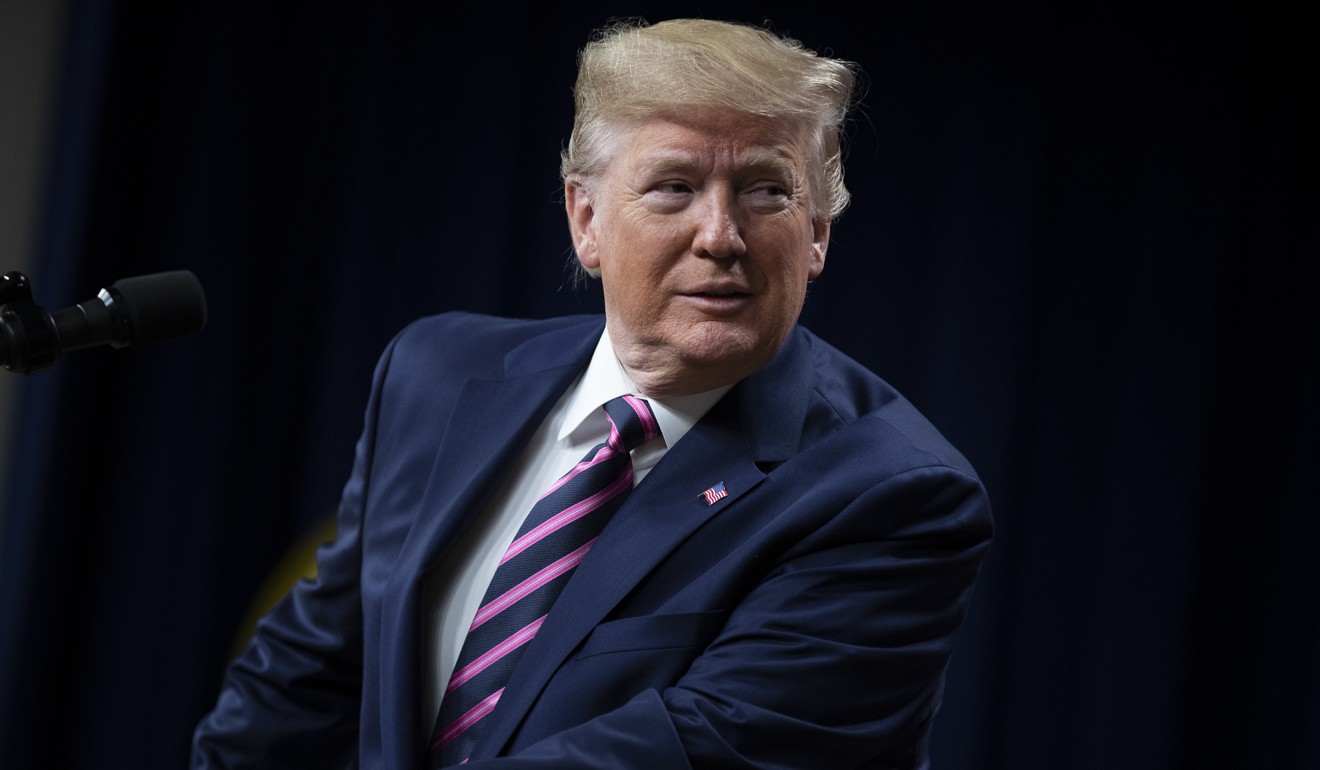
Why US-China trade talks aren’t out of the woods yet despite interim deal
- Foreign Minister Wang Yi says ‘phase-one agreement’ will help stabilise relations but official media declines to hail victory
- Many details have yet to be announced and a number of thorny issues still have to be resolved
China’s foreign minister has said the interim trade deal with the US can help stabilise economic relations, but analysts warned that the future setbacks were still possible.
Beijing and Washington confirmed on Friday that their “phase-one” agreement would see US tariffs on Chinese goods rolled back in return for purchasing more agricultural and energy products as well as manufactured goods.
The US side claimed it was a “historic and enforceable” agreement, while Foreign Minister Wang Yi said during a trip to Slovenia that it would “bring stability to the world’s trade order”.
According to a statement from the foreign ministry, he told a press conference that the deal would “help to restore China-US trade relations gradually and restore faith to the world economy” but he warned that there were still many problems to resolve.
China’s official media also declined to hail it as a victory.
State media outlets did not comment on the deal on Saturday, with the only exception being Global Times, a tabloid affiliated with the official party mouthpiece People’s Daily.
Do the numbers in Donald Trump’s ‘phase one’ trade deal work? US critics worry they don’t
The newspaper described the deal as a “new start point” for US-China trade talks, but said it remained to be seen if there would be enough momentum for the two countries to move forward.
“It is not an easy thing reaching consensus on the text of the phase one deal,” it said in an editorial, warning that sustaining “positive effects” would depend on the efforts of both countries.
Under the agreement, the US cancelled 15 per cent tariffs scheduled to go into effect on Sunday on US$160 billion of Chinese products, including laptops, mobile phones, toys and Christmas decorations. China also cancelled retaliatory tariffs scheduled for the same day, including a 25 per cent levy on US cars.
The US will also halve tariffs on US$120 billion of Chinese goods, from 15 per cent to 7.5 per cent – but a 25 per cent tariff on a further US$250 billion of products will remain in force.
Stock markets in the US gave a lukewarm reaction to Fridays’ announcements, with many observers arguing that the deal would only temporarily alleviate tensions.
Lu Xiang, a research fellow specialising in US-China relations with the Chinese Academy of Social Sciences, said there are still blanks to be filled in.
“The extent of the tariff rollback by the US is limited. China’s announcement that the US will offer more exemptions, and it how it will proceed, have yet to be reflected in the US statements,” he said.
He argued that talks would enter a crucial phase next year as Donald Trump faces a re-election campaign.
“The US has wasted too much time, from last February until now, in negotiating a deal with China. We could have conducted more substantive discussions on bilateral trade and economic issues,” he said.
“China has the utmost sincerity, hoping the US can stick to the deal, but it would be no surprise at all if Trump flip-flops again,” he said.

A press conference held by the Chinese negotiating team late on Friday did not go into details of the key issues of the deal, with the final text awaiting translation and a legal review.
A statement by the Office of the US Trade Representative did include some details. These included an agreement by China to buy more from the US over the next two years, which would raise the value of its total imports by US$200 billion compared with the 2017 figure.
Chinese officials did not confirm any figures in their press conference, saying only that its purchases would be based on market demand and follow the rules of the World Trade Organisation.
The deal also includes a pledge by China to stop unfair technology transfers, increase transparency about its foreign exchange rate policies and refrain from competitive devaluation of the yuan. Both sides also agreed to set up mechanisms to resolve disputes and ensure they implemented what they had agreed.
However, thorny issues such as industrial subsidies or reforms of state-owned enterprise are not included in the deal.
Trade deal may offer only short respite from US-China tensions, observers say
Reuters reported that the 86-page agreement was due to be signed in the first week of January in Washington, while US Trade Representative Robert Lighthizer told a press conference on Friday that the two sides could start to address more difficult issues next year.
Mei Xinyu, a researcher with the Chinese Ministry of Commerce, warned that “the hard bones” still needed to be addressed, and warned that disagreements could undo the impact of the phase-one deal.
“Do not put hope in other countries, we should do our homework ourselves,” said Mei.
“It is also completely possible that the US will suffer a financial crisis and recession in 2020, in which case the US will have less incentive to implement the deal. So we have to be fully prepared and have no illusions about the economic cycle.”

